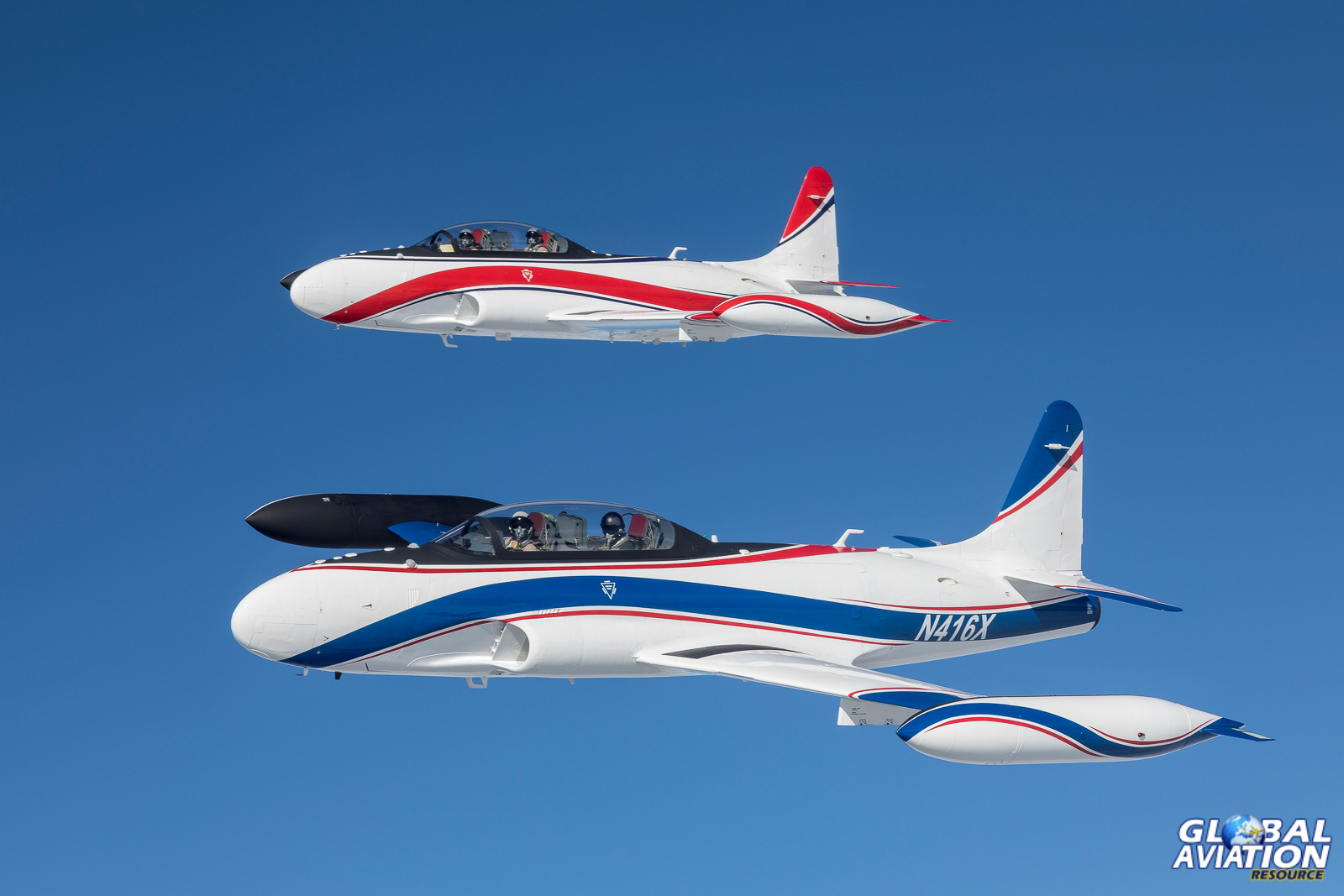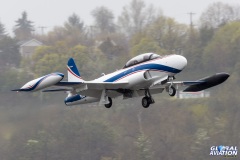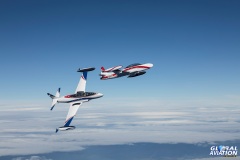On Friday, December 4, 2020, Boeing undertook a formation flight of its two T-33 chase planes to mark their retirement from use. Rob Edgcumbe provides an update for Global Aviation Resource on what took place. Additional images as credited.
In early December, 2020, word rapidly started to circulate in the Pacific Northwest aviation community that Boeing was retiring its T-33 chase planes. Boeing has operated two Canadair built T-33s in support of flight test activities and they are based at Boeing Field, along with a pair of T-38 Talons. Friday December 4 was to be the retirement flight.

The pair of T-33s in flight prior to retirement. © Boeing – Global Aviation Resource.

One of the T-33s lines up for departure at Paine Field. © Rob Edgcumbe – Global Aviation Resource
A formation flight was planned. Departing from Boeing Field, the pair would head up to Paine Field where Boeing has its Everett wide body assembly facility before returning to Boeing Field. The whole thing would take less than an hour.
Boeing confirmed the retirement and storage of the airframes.
“The T-33s have supported many flight tests for Boeing over the last four decades. They served as the safety chase planes for the first flight of nearly every new and derivative Boeing commercial airplane, starting with the 767 in 1981 through today’s 777-9. We are currently looking into other options to support our flight test activities.”

Dynamic pairs split in flight. © Boeing – Global Aviation Resource

Takeoff from Boeing Field on a murky day for another test flight. © Rob Edgcumbe – Global Aviation Resource
While Boeing is not yet confirming what the replacement for the T-33s will be, the rumour mill has been busy. Recently Boeing took delivery of a refurbished TA-4J Skyhawk to support T-7 flight test at St Louis. A second airframe has been registered. Whether that one is also for St Louis or whether it might come to Seattle remains to be seen. Whether other airframes will follow to bolster the fleet is not yet apparent.
Both of the T-33s have Canadian heritage. They are Canadair built examples and originally served with the RCAF as pilot training aircraft. Their careers with the RCAF were considerably shorter than their civilian lives. When disposed of, they separately made their ways to the US through a variety of owners with N109X arriving in the US in the 1960s and N416X arriving in the 1970s. Both had roles in test programs for defence programs including separate missile development work for guidance and sensor systems before making their way to support the Boeing flight test programs in Seattle. The T-33s have been a regular sight in the Seattle area for years so their sudden retirement came as a shock to many. We shall see what the disposal plans are for them in due course while we await their replacements.
Thanks are provided to Elisa Hahn from Boeing .













